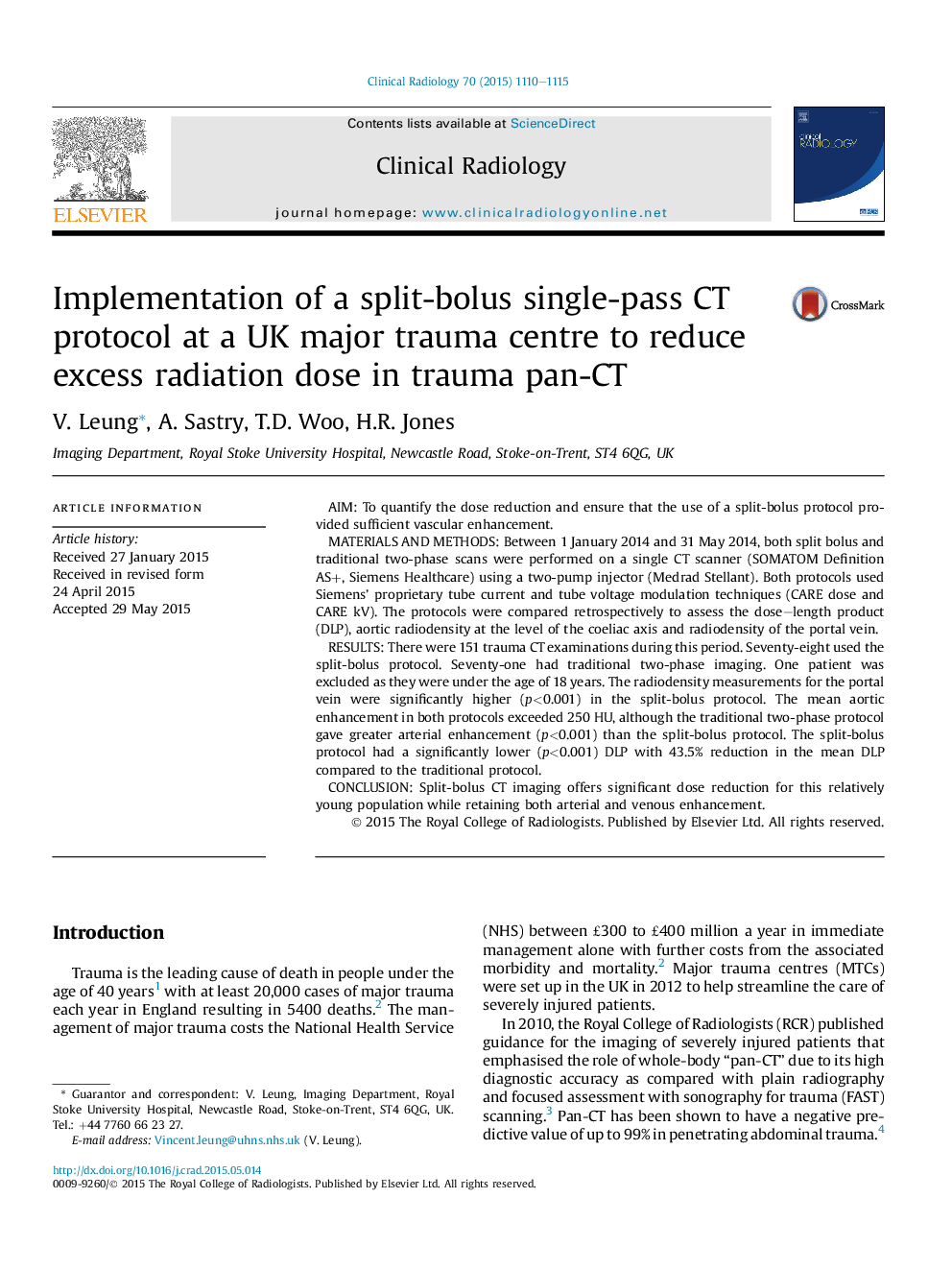| Article ID | Journal | Published Year | Pages | File Type |
|---|---|---|---|---|
| 3981504 | Clinical Radiology | 2015 | 6 Pages |
•We implemented a split bolus pan-CT protocol for trauma CT.•We compared the radiation dose and vascular enhancement of the split bolus protocol to a traditional two phase protocol.•The split bolus protocol had a 43.5% reduction in mean DLP.
AimTo quantify the dose reduction and ensure that the use of a split-bolus protocol provided sufficient vascular enhancement.Materials and methodsBetween 1 January 2014 and 31 May 2014, both split bolus and traditional two-phase scans were performed on a single CT scanner (SOMATOM Definition AS+, Siemens Healthcare) using a two-pump injector (Medrad Stellant). Both protocols used Siemens' proprietary tube current and tube voltage modulation techniques (CARE dose and CARE kV). The protocols were compared retrospectively to assess the dose–length product (DLP), aortic radiodensity at the level of the coeliac axis and radiodensity of the portal vein.ResultsThere were 151 trauma CT examinations during this period. Seventy-eight used the split-bolus protocol. Seventy-one had traditional two-phase imaging. One patient was excluded as they were under the age of 18 years. The radiodensity measurements for the portal vein were significantly higher (p<0.001) in the split-bolus protocol. The mean aortic enhancement in both protocols exceeded 250 HU, although the traditional two-phase protocol gave greater arterial enhancement (p<0.001) than the split-bolus protocol. The split-bolus protocol had a significantly lower (p<0.001) DLP with 43.5% reduction in the mean DLP compared to the traditional protocol.ConclusionSplit-bolus CT imaging offers significant dose reduction for this relatively young population while retaining both arterial and venous enhancement.
